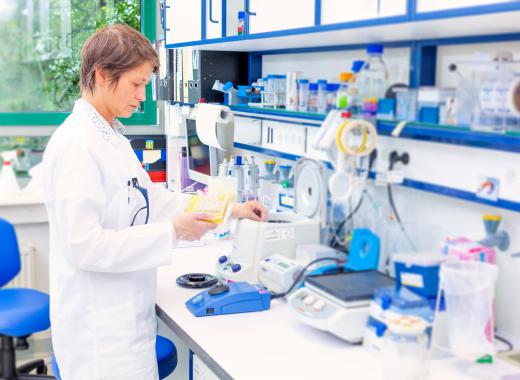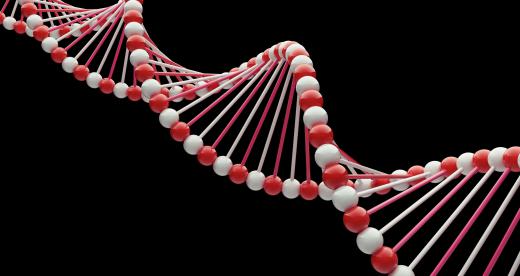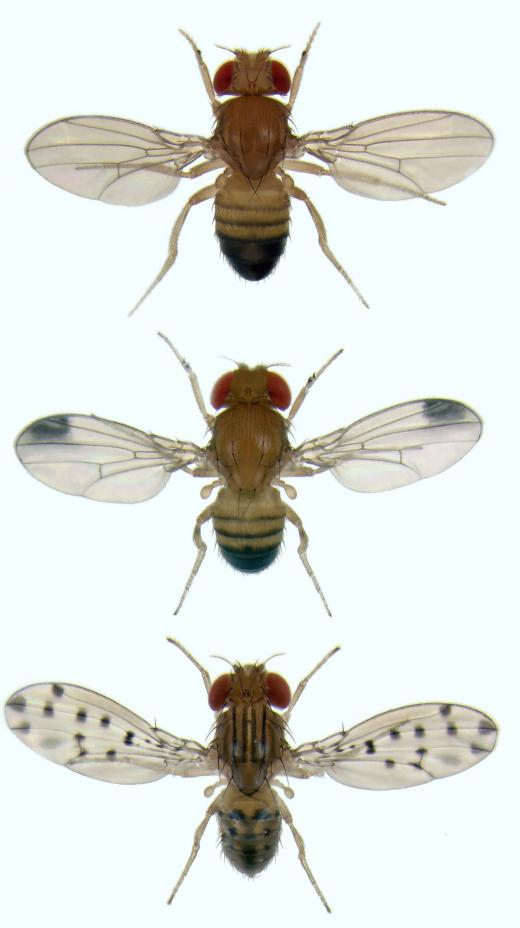What is Positional Cloning?
 Mary McMahon
Mary McMahon
Positional cloning is a technique that is used in genetic screening to identify specific areas of interest in the genome, and then determine what they do. This type of screening is sometimes referred to as reverse genetics, because researchers start by figuring out where a gene is, and then they determine what it does, in contrast with methods which start by determining the function of a gene and then finding it in the genome. Genes related to conditions such as Huntington's Disease and cystic fibrosis have been identified with this technique.
In this process, researchers find an area of interest on the genome by looking for genetic markers. They often take advantage of databases that collect information about people with medical conditions so that they can identify common traits that can be used to narrow down an area of the genome that might reveal useful information. Once markers have been found, a researcher can clone and investigate the area of interest to determine what it does. Positional cloning can also be used to screen specific individuals for genetic issues.

This technique depends on a very extensive and well equipped lab that a researcher can use to investigate the genome and experiment with mutations. It also relies on a genome database that researchers can use to compare their results with the genomes of normal individuals, along with individuals who have various mutations and medical conditions. In organisms like plants and fruit flies, a researcher can actually stimulate the creation of mutations with genetic manipulation to learn more about how an area of the genome functions. Such experimentation in humans is not ethical, forcing researchers to compare the information they find with genetic samples, looking for signs of mutations and the way in which mutations express themselves.

Using procedures like this, researchers can map out the genome and slowly but steadily find out what each area of it does. The more information researchers find, the easier their work is, as they can start to find connected markers and traits that interact with each other. Analysis of the genome will also allow researchers to come up with tests that can be used to look for specific inherited conditions and mutations. These tests can be used to screen fetuses for potential birth defects, and to test children and adults for underlying genetic conditions that could manifest later in life.

Like many types of research connected to the genome, positional cloning can sometimes attract controversy. By finding the sites of specific genetic conditions, researchers lay the groundwork for potential treatments and cures, but they also raise questions about genetic testing and how it can be used. For example, with a genetic test to look for the genes that are related to Huntington's Disease, parents might opt to test a fetus during pregnancy and abort it if the test is positive, a choice that could raise uncomfortable ethical questions.
AS FEATURED ON:
AS FEATURED ON:














Discussion Comments
@everyone: Er, no. Positional cloning is a technique to work out what gene causes a specific phenotype.
The only time it is used in humans is when a rare genetic disease has an unknown cause. Positional cloning is the technique used to work out which gene is causing the problem.
This type of "cloning" does not produce clones of organisms (which is often viewed as controversial) but clones of small segments of DNA which usually do not even contain genes (cannot even imagine how this would be controversial).
@SkyWhisperer- Personally, I’m all for progress—especially in medicine. What we learn from this research will help doctors find cures for diseases like cancer. A doctor could use these techniques to zero in on tumor suppressor genes, for example, which are markers for cancer. Sure, it wouldn’t be any fun to find out you had those markers in your body, but at least knowing what you were dealing with would give you a fighting chance to beat it.
@MrMoody - Cloning on any scale is going to be controversial nevertheless. Anytime I hear about cloning I think about the Jurassic Park dilemma—just because we can do something, should we? This type of positional cloning lets you know things that perhaps you would prefer not to know.
@Catapult – I think they actually do clone but on a smaller scale. Once they find the gene pool they’re looking for, they clone that for further analysis. It’s not as bad as cloning a human or what you see in some science fiction movies.
At first glance I thought the name would refer to an actual type of cloning, as in a type of replicating something. I suppose cloning has become just a term for various things involved in using a genetic map, but I find that a bit confusing.
Post your comments